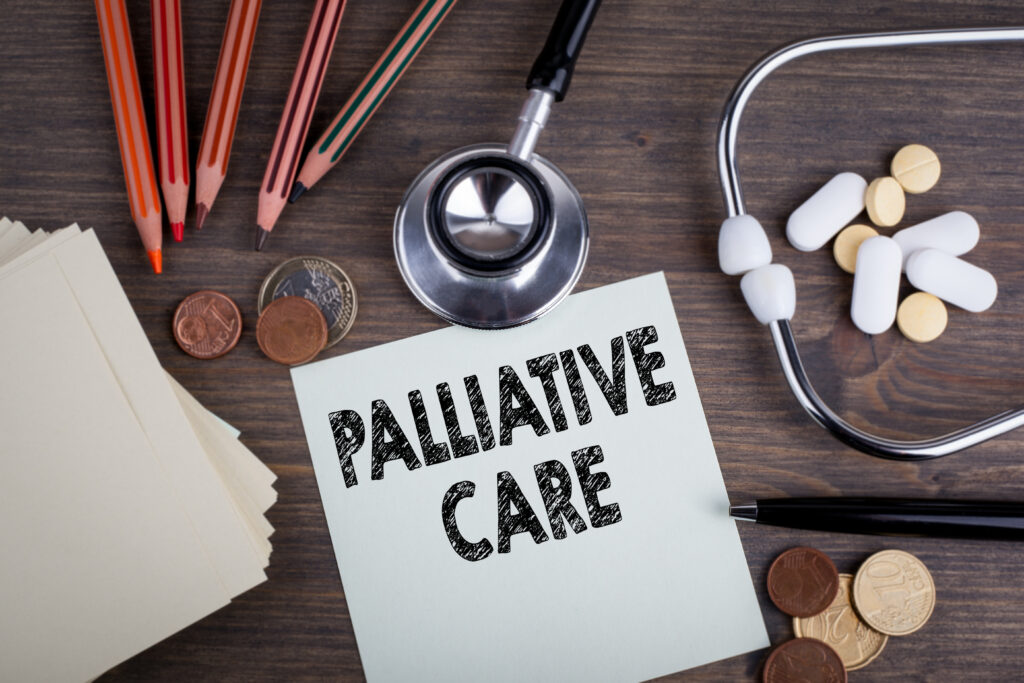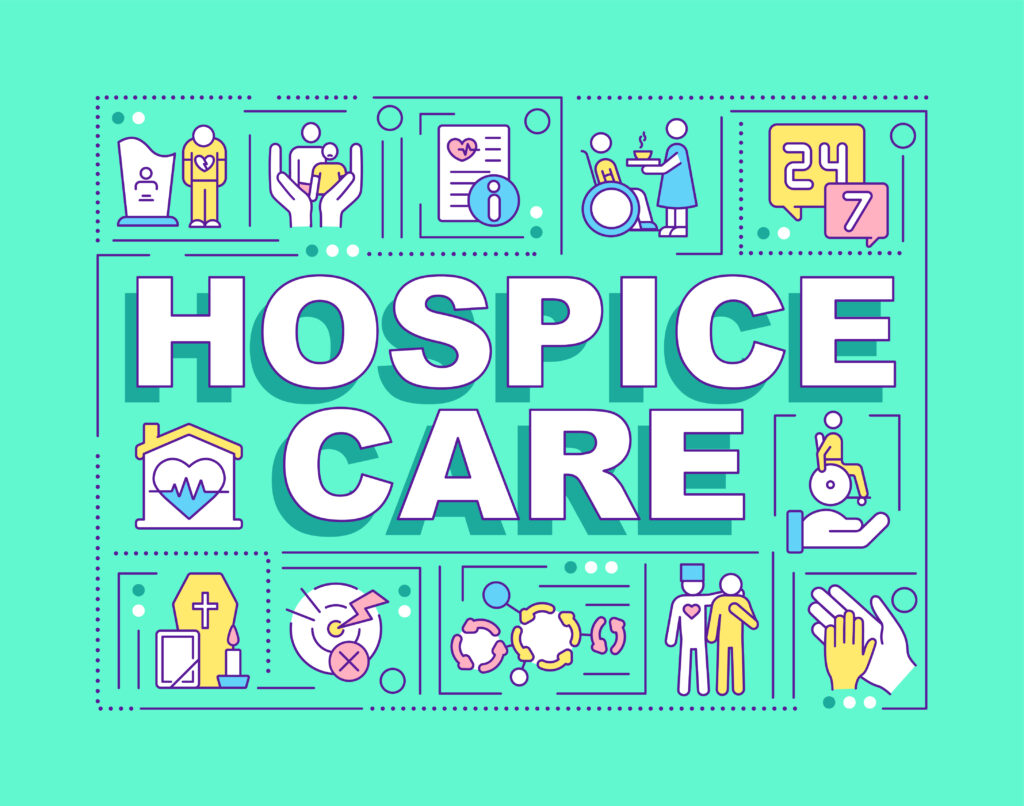November is National Hospice Month, a time when we take the opportunity to recognize the importance of hospice care and all that it provides. When faced with a life-limiting illness or injury, it is important to understand the difference between hospice and palliative care. The purpose of this blog post is to provide you with the information you need to make the best decision for yourself or your loved ones. We will explore the key differences between hospice and palliative care and provide you with a checklist to help you determine which option is the right fit for you.
As we get older, we become more susceptible to illnesses and injuries that can limit our lives. Serious illnesses can affect our day-to-day activities, and if we are not careful, they can quickly take a turn for the worse. Hospice care and palliative care are two options available for individuals with serious illnesses, but there is often confusion about their differences.
When faced with a serious illness or injury, understanding the different types of care available can be overwhelming. This is especially true when it comes to hospice and palliative care. While the two terms are often used interchangeably, they are, in fact, distinct types of care that offer unique benefits and services. Let’s dive into the details of each. Our goal is that you have the knowledge to know the difference and what scenarios would be appropriate for each level of care.

Palliative Care: is a form of medical care that focuses on managing symptoms and improving the quality of life for individuals with serious or chronic illnesses, regardless of their prognosis. Some examples may be Congestive Heart Failure or COPD (Chronic Obstructive Pulmonary Disease). Palliative care providers can help manage pain, nausea, and other symptoms while also addressing emotional and spiritual needs. This type of care can be provided in the home or in a doctor’s offices.
Palliative care services are provided by professionals such as pain management specialists, nurses, and social workers. These professionals work together to ensure that the patient is comfortable and has access to all the necessary resources and tools to manage their illness.
Palliative care is a service covered under the Medicare Part B or outpatient benefit. If you have a Medicare Advantage Plan you can double-check with the insurance company for coverage. Co-pays will be similar to your co-pays for a doctor’s visit.
Hospice care: on the other hand, is designed for individuals who have a life expectancy of six months or less. Hospice care is intended to provide comfort and support to individuals and their families during the end-of-life process. Hospice care providers offer a comprehensive range of services, including pain and symptom management, emotional support, and spiritual care. Hospice care can be provided in the home, hospital, or specialized facility. Hospice can be residential, acute, or hospice in the home.
No one has a crystal ball to predict the outcome of someone’s life. Some people spend more time on hospice than six months. Some people have been on hospice for over a year. Other people actually get better on hospice once their symptoms are managed. You can “graduate” from the hospice services and actually be discharged. This is a little more in-depth, however my point here is that once you sign on to hospice, you can make a choice to stop services.
Hospice care is covered by Medicare Part A or the hospital benefit plan. Medicare will cover 100% of eligible items including some medications, equipment, and the services of your nurse, aide, social worker, chaplain and any other services your hospice agency provides.

By bsd studio Adobe Stock Photos
How to Choose:
If you or a loved one are facing a serious illness, it is important to determine the best course of action. This will depend on your specific needs and preferences. Palliative care may be the best option for individuals who have a serious illness but are not necessarily at the end of their life. Palliative care can help manage symptoms and improve quality of life. On the other hand, hospice care is intended for individuals with a short life expectancy and provides end-of-life care and support.
One of the key differences between hospice and palliative care is the timing of each. Palliative care can be provided from the time of diagnosis through the end-of-life process, regardless of life expectancy. Hospice care, however, is specifically intended for individuals who have a life expectancy of six months or less. This does not mean that hospice care cannot be extended, but it does require regular recertification to ensure that the patient still meets the eligibility criteria.
Another difference between hospice and palliative care is the level of support provided. While both types of care focus on improving quality of life, hospice care providers offer more comprehensive support, including emotional and spiritual care. Hospice care providers work closely with the patient’s family members to ensure that they are also receiving the support they need. Family support and grief counseling is a part of hospice care.
One of the main differences between hospice and palliative care is the timing of their administration. Palliative care can be administered at any time during the course of an illness, while hospice care is only provided during the end-of-life process. Palliative care can be delivered concurrently with curative treatments, such as chemotherapy, while hospice care is usually pursued once curative treatments have ended.
If you have fears or uncertainties, you may consider reading our book. “Cracking the Hospice Code, Your Nurse Advocate Consulting Debunks the Top 10 Misconceptions of Hospice.” We share many stories of past clients that have given us permission to share their stories. Stories of hope, struggle, accomplishments, and humor. See firsthand real-life encounters with hospice services and discover if you can see the benefits of this type of care. Request our free checklist that will walk you through the differences between Hospice and Palliative Care and continue to help you sort through these services.

JasperArt
Conclusion:
When faced with a serious illness, it is important to understand your options for care. Palliative care can provide symptom management and support throughout the course of the illness, while hospice care is specifically intended for individuals with a life expectancy of six months or less. Both options offer comprehensive support and a focus on improving quality of life. By understanding the differences between hospice and palliative care, you can make the best decision for yourself or your loved ones. If you have questions or need help determining which option is right for you, reach out to your healthcare provider, Your Nurse Advocates, or hospice and palliative care specialists in your community. Remember, you are not alone, and there are trained professionals available to help you every step of the way. As patient advocates, we can help you select the type of service as well as the right agency to provide the services that best suit you or your loved one.
This is a delicate topic we don’t take lightly. November, National Hospice Month allows us to open the dialogue and answer questions and help you and your loved ones feel more comfortable with both services.
Take care and see you back here soon,
Pam and Linda
Your Nurse Advocates
“Compassionate care for aging parents, peace of mind for adult children.”
Resources
Cracking the Hospice Code Book
Should I Choose Hospice Free Checklist




